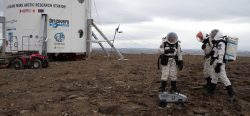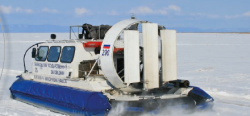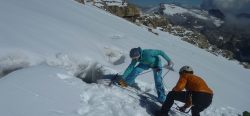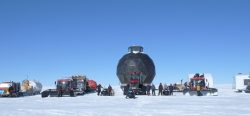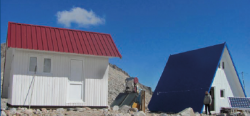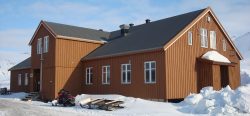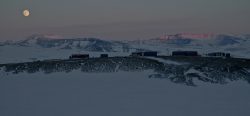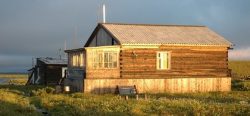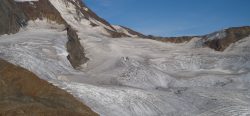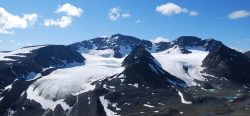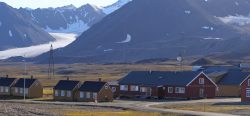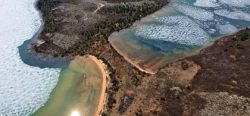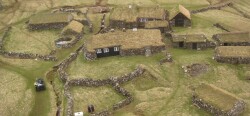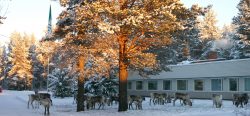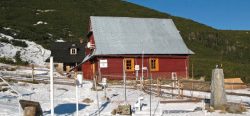Contact Details
0031 50 7200 449 (Skypein number, with voicemail) or 0047 7902 6852
- Link: http://arcticstation.nl/
STATION NAME AND OWNER
The Netherlands ArcticDefinitions of the Arctic vary according to environmental, geographical, political, cultural and scientific perspectives. Some scientists define the Arctic as areas having a high latitude, long winters, short, cool summers,... More Station is owned and run by the ArcticDefinitions of the Arctic vary according to environmental, geographical, political, cultural and scientific perspectives. Some scientists define the Arctic as areas having a high latitude, long winters, short, cool summers,... More Centre of the University of Groningen.
LOCATION
The Netherlands ArcticDefinitions of the Arctic vary according to environmental, geographical, political, cultural and scientific perspectives. Some scientists define the Arctic as areas having a high latitude, long winters, short, cool summers,... More Station is situated in Kongsfjorden on the island of Spitsbergen and is part of an international research community in the former mining town of Ny-Ålesund, Svalbard. In this town, more than 10 nations have their own station while using shared facilities for meals and recreation. The whole local community is focused on science and maintenance of infrastructure. Several stations have independent terrestrial research programs and the Netherlands ArcticDefinitions of the Arctic vary according to environmental, geographical, political, cultural and scientific perspectives. Some scientists define the Arctic as areas having a high latitude, long winters, short, cool summers,... More Station is the smallest of all.
BIODIVERSITY AND NATURAL ENVIRONMENT
Kongsfjorden is a beautiful high arcticDefinitions of the Arctic vary according to environmental, geographical, political, cultural and scientific perspectives. Some scientists define the Arctic as areas having a high latitude, long winters, short, cool summers,... More environment with several glaciers terminating in the fjord. The raised beach terraces are sparsely vegetated with dense moss cover around small tundraA type of ecosystem in which tree growth is limited by low temperatures. The origin of the word is from from the Kildin Sami word t?ndâr, meaning "uplands" or "treeless mountain tract". In the northern... More lakes and below bird cliff s. Locally there are clear traces of former human activity by trappers and from coal mining. At present, the whole area is well-protected and a special permission is needed to enter the islands during the bird breeding season. In 1978, reindeer was re-introduced and since 1982 barnacle geese have established a colony and are regularly feeding between the houses. Both herbivores have a clear impact on the vegetation.
HISTORY AND FACILITIES
From 1916 to 1968, the village of Ny-Ålesund was a coal mining settlement. This village has now developed into a unique mix of stations, laboratories, and research infrastructure (https://nyalesundresearch.no/). There is a small international community of 40 to 180 people – all scientists and science supporting staff, and meals are provided in a central facility (https://kingsbay.no/). Tourists are discouraged to stay overnight. In 1990, the University of Groningen initiated a project on barnacle geese and later joined the shared facilities with the establishment of the Netherlands Arctic Station (https://www.arcticstation.nl). The station consists of two small, historic buildings for lodging with electricity and internet. The station has a close cooperation with the German-French base (https://www.awipev.eu/), which provides logistic support during summer.
GENERAL RESEARCH AND DATABASES
Research focuses on the role of barnacle geese in the arcticDefinitions of the Arctic vary according to environmental, geographical, political, cultural and scientific perspectives. Some scientists define the Arctic as areas having a high latitude, long winters, short, cool summers,... More ecosystemAll the living organisms (including people) in an area as well as its physical environment, functioning together as a unit. An ecosystem is made up of plants, animals, microorganisms, soil,... More. Nutrient cycles, plant productivity, and vegetation patterns are studied to understand plant-herbivore interactions. Data on behavior, timing, and breeding success of individually ringed geese are collected over their lifetime, and the effect of predators is studied as a dynamic interaction. Population trends of plants, herbivores, and predators are monitored in a warming environment. Long term experiments include grazing enclosures and greenhouses on paired vegetation plots. Timing of migration in geese and arcticDefinitions of the Arctic vary according to environmental, geographical, political, cultural and scientific perspectives. Some scientists define the Arctic as areas having a high latitude, long winters, short, cool summers,... More terns is monitored with geolocators. Other projects involve insect abundance, lake biodiversityBiological diversity. The many and varied forms of life on Earth (collectively known as biota). As well as diversity of species (species diversity), there is also diversity within populations of a... More, marine fytoplankton, the history of human exploitation, the effect of tourism on cultural heritage, archaeologyThe study of past human activity, mainly through studying artefacts and structures left behind, and by revealing other evidence of past activities. The first systematic archaeological excavations in the Arctic... More and pollution.
HUMAN DIMENSION
The local community in Ny-Ålesund is a mixture of nationalities from the various stations. The area is owned by a company called Kings Bay, taking care of the logistics for the entire village. Ny-Ålesund has no permanent residents and all activity is linked to science. The closest town is the Norwegian village of Longyearbyen, which is the main hub of Svalbard. In Longyearbyen, permanent residents are few (ca 2000). There are no indigenousBelonging to a certain place. Indigenous people are distinct ethnic groups that have historic connections to people who lived in a territory prior to the area being colonized or coming... More people and most inhabitants originate from the Norwegian mainland and live on Svalbard only because of their temporal job assignment. Tourism, local administration and science are the most important sources of income.
ACCESS
Throughout the year, Kings Bay organizes two flights per week with a small plane (14 passengers) between Longyearbyen and Ny-Ålesund. In summer, there are about 30000 tourists landing by boat for just a few hours. There is only a limited amount of roads near the village. Local transportation is possible by car, bicycle, snowmobile, or foot. Small boats are used for transportation inside the fjord.
TAKE A TOUR AROUND THE STATION
This service is provided by INTERACT partner MAPILLARY


